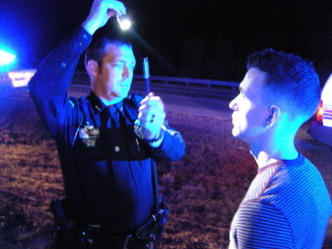As US States and Canada move closer to the decriminalization and legalization of marijuana, one question remains: how will the respective governments regulate driving under the influence of cannabis?
Drunk Driving
Driving with more than 0.08% of alcohol in your blood is a serious criminal offense in both the US and Canada. And despite all drunk driving prevention campaigns in place and strict roadside police control, a third of all fatal car crash accidents in 2014 were caused by drunk driving in both countries.
Even though a high rate of fatal car crashes caused by alcohol, drunk driving is closely regulated by law in countries all over the world. Also, alcohol in the blood is very accurately measured by roadside breathalyzers since the 1930’s.
However, up until today an accurate roadside equivalent test to determine if someone is driving under the influence of marijuana does not exist.
High Driving
Most states, including Indiana, have zero tolerance for driving under the influence of Marijuana. But Colorado, for example, has regulated it differently. Under its own state law – it is illegal to drive with a THC level of 5 nanograms per milliliter of blood. Spring 2017 is just around the corner and Canada is working hard to meet the deadline for marijuana legalization. Part of that work requires setting up a way to regulate marijuana impaired driving.
But, there are problems. For instance, the ability and standardized procedures for measuring drug-impaired driving.
There is currently no accurate testing method available. Police officers are currently testing the credibility of roadside oral fluid drug screening devices. In fact, roadside police officers are using Standardized Field Sobriety Tests (SFST’s).
If a driver is pulled over and suspected of driving under the influence of marijuana, he/she will be asked to take a Standardized Field Sobriety Test (horizontal gaze nystagmus, walk and turn test, one-leg stand) or a pilot oral swabs which can detect THC in saliva. Also, officers are being trained to recognize physical symptoms such as eye redness or unusual behavior, and can order the driver to provide a blood, breath, or urine test. However, drug screening devices are still being tested and are causing a lot of controversy in public opinion.
Drunk Driving vs. High Driving (Infographic)
DUI, DWI, and OWI? What’s the difference between these three offenses? This infographic from OMQ law office outlines an informative comparison of laws in the US and Canada. It explains the difference between Driving Under the Influence (DUI) and Driving While Intoxicated (DWI), how alcohol and THC levels are measured, and what the existing penalties are. Let’s take a look at what is considered illegal in these two countries, and the differences between them:
http://omqlaw.ca/criminal-law/drinking-and-driving-related-offences/
If you have been charged with an OVWI or Driving under the influence of drugs you need an experienced DUI attorney and Drug lawyer to investigate the details of your arrest, how you were arrested, and the process law enforcement used in determining your intoxication levels. Potts Law LLC has the litigation and trial experience to assist you in your time of need. As a former prosecutor Kevin Potts knows how to litigate your case from the government’s prospective lending invaluable information in determining the strengths and weaknesses from both sides. Call Potts Law LLC today for you free consultation! 317-951-0087 kevin@pottslawllc.com


